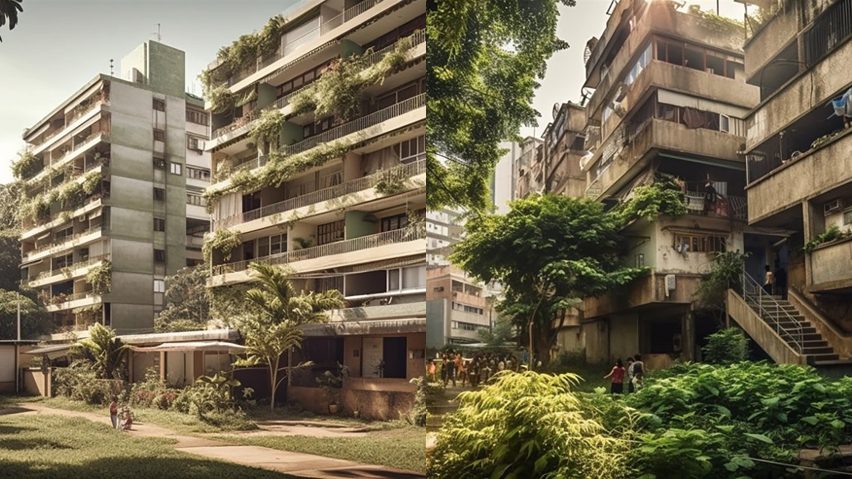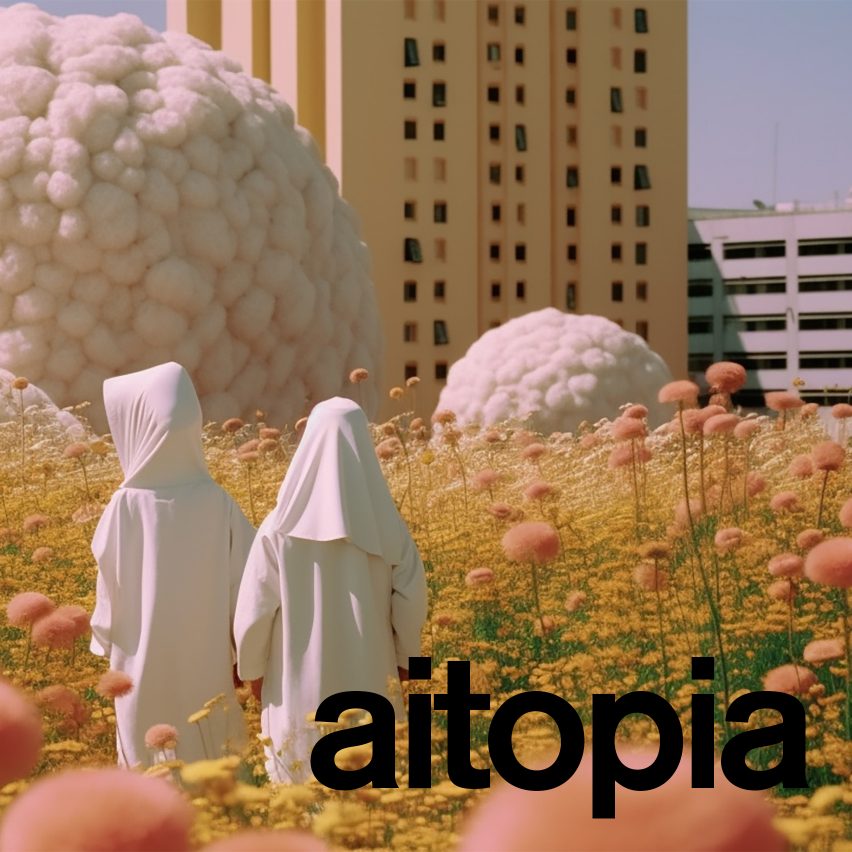
"AI tools are rapidly changing how we imagine the urban environment"
Using AI to help design cities of the future risks creating a regressive world like The Jetsons unless we recognise the technology's susceptibility to stigma and bias, write MIT scientist Fábio Duarte and Washington Fajardo.
Artificial intelligence (AI) tools are rapidly changing how we investigate and imagine the world and the urban environment. They can generate a highly "realistic" representation of an urban scene with just a single prompt – but not always for the best.
Built on billions and billions of textual and visual inputs and further billions of parameters, AI tools like DALL-E, Midjourney and GPT-4 identify patterns over patterns and generate extremely impressive results.
As Harvard professor Steven Pinker expressed in an interview with the Harvard Gazette, this "appearance of competence [...] utters confident confabulations". It is impressive how plausible and accurate the results are. Until they are not.
Images help us to envision and change the future of cities
Images help us to envision and change the future of cities. With only a few strokes, Lúcio Costa synthesized the spirit of a modernist city that would become Brasília. Jacob Riis's photos of the precarious living conditions of immigrants in Lower Manhattan helped to change housing and public health policies in New York.
So how does AI see our cities? We entered a prompt into Midjourney: "editorial style photo, eye level, wide angle, modernist social housing in Rio de Janeiro, families, children playing, Brazilians, high-quality architecture, concrete, shades, vertical brise soleil, pilotis, green, trees, vegetation, dogs, birds, natural light, afternoon, cozy, tropical, shine day, comfort, clean, high quality, render 3D, 8K, photorealistic". It turned out a sepia-tinged image of aged but well-maintained apartment blocks covered in vegetation with a child playing in the foreground.
Then we entered a second, very similar prompt. The only difference was two new words: "favela nearby". A favela is an informal settlement which frequently lacks basic public services, and is mostly occupied by poor families who cannot afford property in the regulated real estate market.
The resulting picture shows a derelict and dirty apartment building in a cramped, dingy setting, which has nothing to do with the legal, infrastructural, or social issues related to the favela. What the AI "predicts" is based not only on patterns of image data but also patterns of social stigmatization about certain urban populations.
We tried another pair of prompts, specific to New York: "street-level scenes in New York, streetscape, eye-level, residential area, natural light, photorealistic". To one we added "black community", to the other "white community".
What the AI 'predicts' is based not only on patterns of image data but also patterns of social stigmatization
In the latter image, the pavement is better maintained and the building facades have cornices and other architecture details, while the shop windows and facades in the "black community" image are packed with advertisements and the building architecture is simple to the bare minimum.
We asked the cutting-edge chatbot GPT-4 for advice about stigmatization and urban imagery. "Urban imagery analysis can perpetuate stereotypes and biases, leading to further marginalization and discrimination of already vulnerable populations," it responded. "However, GPT-4 has the potential to mitigate this issue by generating more accurate and neutral descriptions of urban scenes, without relying on preconceived notions or assumptions." True, but not exactly reassuring.
We cannot break these stigmas by relying on patterns that exist in the present. Instead, we should learn from The Jetsons, the Hanna-Barbera cartoon from the 1960s that envisioned a future where people would drive flying cars, machines would prepare food at home, robot maids would clean houses, people would communicate through video systems, and computers would assist with homework.
Designing the future is about diverging from predictions
Although we now have many of these technologies, The Jetsons failed to anticipate many of the most important transformations: it imagined that we would still have maids and fixed working hours, that only husbands would work and that the typical family structure would still consist of husbands and wives.
A predictive vision of the future with all the social and moral vices found in their present. We must now avoid falling into the same trap.
Machine-learning models are becoming remarkably adept at analyzing large amounts of data, identifying patterns, and making predictions. However, we must not mistake these predictions for inevitable certainties, or even inevitable futures. Designing the future is not about predicting it. Designing the future is about diverging from predictions.
That is not to say that AI doesn't have a role in proposing futures. However, AI-bots' biases and misconceptions are learned from our individual and collective biases and misconceptions. As Florida International University professor Neil Leach writes in Dezeen, "what architects should be designing right now is not another building, but rather the very future of our profession". That future certainly includes AI.
AI-bots' biases are learned from our individual and collective biases
There are three options. First, inject possible futures into the present. At the Senseable City Lab, we are already using AI to investigate the latent semantics of urban environments, uncovering the collective and shared understanding of cities. By incorporating iterations that include possible futures, AI can help us achieve design goals which could diminish current biases.
Second, imagine cities as at the convergence of data from climate, social, or cognitive sciences so that the design of future urban environments can be informed by facts.
Or option three: fail to change the present, and risk AI accelerating us towards a Jetsonian future.
Fábio Duarte is a principal research scientist at MIT's Senseable City Lab. Washington Fajardo an independent researcher based in Rio de Janeiro. This piece was co-written by Martina Mazzarello and Kee Moon Jang, postdoctoral researchers at the Senseable City Lab.
The images were created by Senseable City Lab using Midjourney.

AItopia
This article is part of Dezeen's AItopia series, which explores the impact of artificial intelligence (AI) on design, architecture and humanity, both now and in the future.
Dezeen in Depth
If you enjoy reading Dezeen's interviews, opinions and features, subscribe to Dezeen In Depth. Sent on the last Friday of each month, this newsletter provides a single place to read about the design and architecture stories behind the headlines.